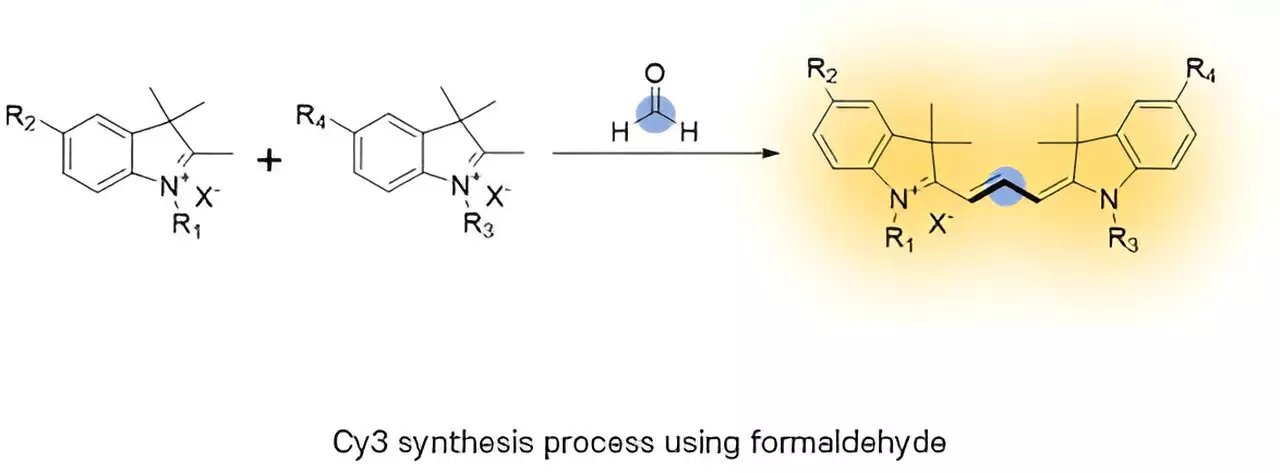Organic fluorophores are integral components in the fields of medical diagnostics and bioimaging, serving invaluable functions in tracking cancer cells and conducting genetic analyses. These fluorescent compounds can absorb light at specific wavelengths, emitting detectable signals that facilitate visualization in complex biological systems. Among these compounds, trimethine cyanine (Cy3) has stood out for its ubiquity and utility. However, traditional synthesis methods for Cy3 have faced criticism for their inefficiency and generation of waste, a challenge that scientists have been eager to overcome.
Recent research published in the esteemed journal Angewandte Chemie International Edition has illuminated a novel pathway for synthesizing Cy3 in an atom-efficient and cost-effective manner. The study, conducted by a proficient team from POSTECH led by Professor Young-Tae Chang, turned to formaldehyde (HCHO)—the simplest one-carbon molecule—as a pivotal reagent. Conventional synthesis of Cy3 typically involves cumbersome chemical processes, requiring high molecular weight compounds and leading to numerous by-products. By substituting these complex precursors with formaldehyde, the researchers not only reduced the molecular size required for the reaction but also enhanced the atom efficiency significantly.
The simplicity of formaldehyde offers remarkable advantages in carbon addition reactions essential for constructing Cy3 molecules. Although formaldehyde can exhibit toxic properties upon interaction with biological macromolecules, its role in organic synthesis cannot be understated. By employing formaldehyde in a streamlined, one-pot reaction, the researchers successfully transformed a multi-step synthesis into a singular, more efficient process. This methodological shift reduces the overall time and resources needed for production, demonstrating a clear path toward more sustainable laboratory practices.
Implications for Biological Studies
Beyond the laboratory confines, the implications of this research are vast. The team’s exploration of the synthesis method’s applicability in biological systems has yielded intriguing results. Their studies on rat small intestine tissue highlighted an observable decrease in fluorescence during inflammation— a phenomenon attributed to reduced formaldehyde levels impacting Cy3 synthesis. These findings not only emphasize the potential of their technique for in vitro applications but also pose exciting questions for in vivo research, particularly regarding metabolic processes and their effects on fluorescent signaling.
The breakthrough achieved by the POSTECH team signifies a pivotal moment in the development of organic fluorophores, marrying efficiency with adaptability. As they endeavor into future research, the implications of using formaldehyde extend well beyond Cy3, potentially influencing a broader array of synthetic methodologies in organic chemistry. It exemplifies how embracing simplicity in where we source core building blocks for complex molecular structures may pave the way for enhanced efficiency and sustainability in scientific inquiries. Ultimately, this research not only advances the field of bioimaging but also enriches our understanding of the biochemical landscape where these innovations will apply.


Leave a Reply